Media Matters
March 2007
On the Sunday after the midterm elections, in which Democrats took control of Congress for the first time in a dozen years, viewers tuned in to NBC's Meet the Press to hear what the Democratic win meant for the country -- only to discover that host Tim Russert did not have any Democrats on at all. Instead, Russert's guests were Republican Sen. John McCain (AZ) and Sen. Joseph I. Lieberman (CT), who ran in the general election as an Independent after losing the Democratic primary. And after an election in which the public's opposition to the Iraq war was a central issue, Meet the Press hosted two guests who support the war.
But that incident is hardly an aberration. In a new report by Media Matters for America -- If It's Sunday, It's Still Conservative: How the Right Continues to Dominate the Sunday Talk Shows, we show that the Sunday shows -- Meet the Press, ABC's This Week, CBS' Face the Nation, and Fox Broadcasting Co.'s Fox News Sunday -- have consistently given Republicans and conservatives an edge over their Democratic and progressive counterparts in the last two years, the period of the 109th Congress. And, as our analysis shows, the recent shift in power in Washington has yielded mixed results, at best.
OUR KEY FINDINGS:
- Despite previous network claims that a conservative advantage existed on the Sunday shows simply because Republicans controlled Congress and the White House, only one show, ABC's This Week, has been roughly balanced between both sides overall since the congressional majority switched hands in the 2006 midterm elections.
- Since the 2006 midterm elections, NBC's Meet the Press and CBS' Face the Nation have provided less balance between Republican and Democratic officials than Fox Broadcasting Co.'s Fox News Sunday despite the fact that Fox News Sunday remains the most unbalanced broadcast overall both before and after the election.
- During the 109th Congress (2005 and 2006), Republicans and conservatives held the advantage on every show, in every category measured. All four shows interviewed more Republicans and conservatives than Democrats and progressives overall, interviewed more Republican elected and administration officials than Democratic officials, hosted more conservative journalists than progressive journalists, held more panels that tilted right than tilted left, and gave more solo interviews to Republicans and conservatives.
Now that Congress has switched hands, one would reasonably expect Democrats and progressives to be represented at least as often as Republicans and conservatives on the Sunday shows. Yet our findings for the months since the midterm elections show that the networks have barely changed their practices. Only one show - ABC's This Week - has shown significant improvement, having as many Democrats and progressives as Republicans and conservatives on since the election. On the other three programs, Republicans and conservatives continue to get more airtime and exposure.
In the months ahead, will the networks address the imbalance in their guest lineups? Or will they continue with business as usual?
We urge you to read the report and take action. Tell the networks to address our findings and consider whether the Sunday shows serve the public interest by continuing to give conservatives the edge in setting the terms of the national debate.
If It's Sunday, It's Still Conservative
TABLE OF CONTENTS
- Executive Summary
- Principal Findings
- Since the Midterm Election
- Differences Over Time
- Combined Results
- Conclusion
- Methodology
EXECUTIVE SUMMARY
Every Sunday morning, some of the country's most powerful and influential figures enact one of the most hallowed rituals in American politics: policymakers, government officials, journalists, and other newsmakers appear as guests on the network talk shows to hold forth on the pressing issues of the day. The shows -- ABC's This Week, CBS' Face the Nation, NBC's Meet the Press, and Fox Broadcasting Co.'s Fox News Sunday -- serve as an invaluable forum for the nation's agenda-setters. It is on these Sunday shows where conventional wisdom is formed and the terms of debate are set.
In order to assess the balance of voices on these programs, Media Matters for America classified every guest appearing on these programs during 2005 and 2006 (over 2,000 appearances in all) by their party affiliation and ideology (see Methodology section for details). This report follows on a previous study Media Matters released a year ago that analyzed the Sunday shows dating back to 1997.
The results show that the right has a distinct advantage in determining the shape of the debate on Sunday morning. During the years of the 109th Congress, Republicans and conservatives far outnumbered their Democratic and progressive counterparts on the Sunday-morning talk shows.
SINCE THE 2006 ELECTION
To supplement these findings, the study also examined the performance of all four shows since the Democratic victories in the 2006 election. Among the findings:
- Although it had been significantly imbalanced in the past, ABC's This Week has been the most balanced of the four programs since the midterm election, dividing almost evenly between the two sides.
- Despite the fact that Fox News Sunday remains the most unbalanced broadcast overall, they have made an improvement in the balance of its elected and administration guests. While there were nearly twice as many Republicans as Democrats on the program in 2005 and 2006, the two parties' officials have been equally represented since the 2006 election. It should be noted, however, that because Fox News Sunday's roundtable discussions are skewed so dramatically to the right, overall there are still substantially more Republicans and conservatives on the program than Democrats and progressives.
- Meet the Press and Face the Nation have both performed poorly since the election, with both their overall guest list and the list of administration and elected officials featured on the shows skewing to the right.
COMPARING THE SHOWS IN 2005 AND 2006
The following tables summarize the results from 2005 and 2006. During this period, Republicans and conservatives had the advantage on every show, in every category measured. All four shows interviewed more Republicans and conservatives than Democrats and progressives overall, interviewed more Republican elected and administration officials than Democratic officials, hosted more conservative journalists than progressive journalists, held more panels that tilted right than tilted left, and gave more solo interviews to Republicans and conservatives.
This table summarizes the magnitude of that advantage, listing the difference, in percentage points, between the percent of Republicans/conservatives in a given category and the percent of Democrats/progressives:
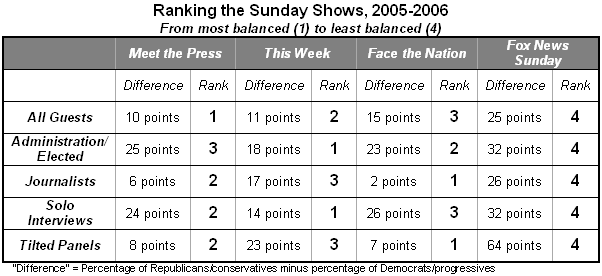
By any measure, Fox News Sunday is the least balanced of the four shows. Every other show came out as the most balanced -- or nearly the least balanced -- in at least one category in 2005 and 2006:
- This Week was the most balanced in its solo interviews and interviews of administration and elected officials. But it had the most tilted panels among the three major network shows and the most right-leaning collection of journalists.
- Face the Nation had the most balanced collection of journalists (because it brings on mostly neutral reporters) and the most balanced panels, but it leaned furthest to the right among the three major network programs in its solo interviews and its overall guest list.
- Meet the Press was the most balanced overall in 2005 and 2006, but the least balanced of the three major network shows when it came to administration and elected officials.
Although one could argue that some of these measures are more significant than others, it is interesting to note that if one were to add up the rankings of the five measures, Fox News Sunday would have a cumulative ranking of 20, and the three other programs would all have a ranking of 10.
To assess whether each show grew more or less balanced over time, we compared their figures from 2005 with their figures from 2006. While the following table does not indicate anything about the magnitude of the change -- some changes are very small, while some are quite substantial, as detailed in the report -- it does show that at least one program appears to be moving in the right direction, toward more balance, while others grew more imbalanced:
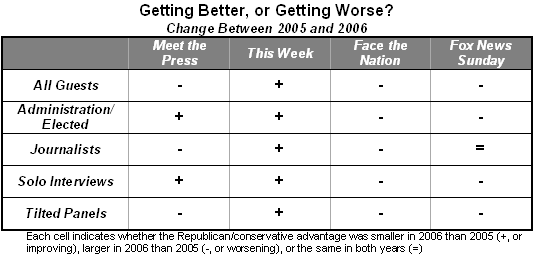
As this table makes clear, This Week made improvements in all five categories from 2005 to 2006. We should stress that, like the other programs, This Week still presented a debate skewed to the right, just not quite as badly in 2006 as it had in 2005. In contrast, Meet the Press, Fox News Sunday and Face the Nation were dominated by more right-leaning voices in 2006 than they had been in 2005.
OTHER KEY FINDINGS
- Republicans and conservatives dramatically outnumbered Democrats and progressives on the Sunday shows in 2005 and 2006, by a margin of 44 percent to 27 percent (the remainder were neutral or nonpartisan figures).
- Counting only elected officials and administration representatives, Republicans had a stark advantage over Democrats, 62 percent to 37 percent.
- Fox News Sunday's journalist panels are the most lopsided, with a typical lineup consisting of two or even three conservatives, one neutral reporter, and one progressive. But even on ABC, NBC, and CBS, conservative journalists were nearly twice as likely as their progressive counterparts to appear on the Sunday shows.
- While a majority of guest panels on the ABC, NBC, and CBS shows were balanced or neutral in their composition, there were nearly three times as many right-leaning panels as left-leaning ones. Fox News Sunday was even worse.
- The most frequent guests on the Sunday shows during the past two years were Sen. Joseph R Biden Jr. (D-DE), with 38 appearances, Secretary of State Condoleezza Rice, with 30 appearances, and Sen. John McCain (R-AZ), also with 30 appearances. And, unlike most elected officials, McCain is almost always given a solo interview rather than being paired with a colleague from the opposing party.
- The Sunday shows granted far more solo interviews to Republicans and conservatives than to Democrats and progressives. The top two Republicans to be interviewed solo, Rice and McCain, together were interviewed solo twice as often as the top two Democrats to be interviewed solo, Biden and Democratic National Committee Chairman Howard Dean.
DO THE NETWORKS UNDERSTAND THE PROBLEM?
This study follows up one Media Matters released a year ago, titled, "If It's Sunday, It's Conservative." When we contacted representatives of the three shows prior to the release of our earlier study and informed them of our results, they all made the same argument in response: Republicans dominated because they were in power. "One needs to consider that the party holding the presidency also has a cabinet full of major newsmaker guests that speak to U.S. policy matters. ... The same would be true for the eight years of the Clinton administration," said Betsy Fischer, executive producer of Meet the Press. "We're a country at war," said Carin Pratt, executive producer of Face the Nation, "and when we can get someone from the administration, like the secretary of state, then we get them. I bet you'd find the same thing during Clinton's administration." A spokesperson for This Week argued that when members of the administration appear on the show, "their segments more often than not are either followed by or include a guest with an opposing voice."
Although their arguments about the Clinton years being the mirror image of the Bush years were simply mistaken (Republicans and conservatives actually had a small advantage during the second Clinton term, which turned into a yawning gap once Bush took office; see the prior report for details), none could explain why conservative journalists so dramatically outnumber progressive journalists on their shows. This question has absolutely nothing to do with which party controls either end of Pennsylvania Avenue. The imbalance existed on all the Sunday-morning shows when Bill Clinton was president, and has continued throughout the presidency of George W. Bush.
The realities of power have changed, and Democrats now control Congress. Will we now see a shift in the guest lists on the Sunday shows? Will Democrats be brought on with greater frequency? Will progressive journalists be offered the same opportunity to appear that conservative journalists enjoy? Are the producers of these programs willing to publicly state that they will make an effort to institute such a change? So far, only ABC seems to have adjusted to the new political reality. We look forward to seeing what the other three networks will do.
PRINCIPAL FINDINGS
INTRODUCTION
On the weekend after the 2006 midterm elections, in which Democrats scored a resounding victory by taking both houses of Congress, viewers tuned in to Meet the Press, the most popular Sunday talk show, only to find that Tim Russert did not see fit to interview any Democrats. His guests that day were Sens. John McCain (R-AZ) -- one of the most common Sunday-show interviewees -- and Joseph I. Lieberman of Connecticut, who had left the Democratic Party after losing a primary.
Unfortunately for Democrats and progressives, what occurred that Sunday was hardly an isolated incident. In fact, as this study demonstrates, they have found themselves significantly outnumbered on the Sunday shows for some time.
For the current study, Media Matters for America conducted a content analysis of the more than 2,000 guest appearances on the Sunday talk shows in 2005 and 2006. As with our previous study on this topic, which found dramatic advantages for Republicans and conservatives, guests were classified as one of the following: Democratic, Republican, progressive, conservative, or neutral (nonpartisan, centrist, or independent). Each guest was labeled according to his or her known political party affiliation or stated ideological identification.
The consequences of the ideological imbalance on the Sunday shows are obvious. The shows occupy a singular place in the American media landscape. Their audience of a combined 12 million or so viewers includes virtually the entire journo-political establishment. The discussions held on the shows frequently determine the scope of official debate in Washington, legitimizing some views and -- by nature of their absence -- marginalizing others.
In light of the clear advantage conservatives and Republicans have enjoyed on the Sunday shows, Media Matters asks whether the networks are serving the public well in providing such a lopsided representation of the national discourse. With Democrats now in control of Congress, will the networks continue to skew in favor of Republicans and conservatives in their guest lineups? Or will they expand the range of debate and allow more Democrats and progressives to participate? As our data show, the early returns are not encouraging.
ALL FOUR SUNDAY SHOWS SKEWED RIGHT
Throughout the years of the 109th Congress, the four Sunday shows displayed a troublesome pattern: Republicans and conservatives outnumbered Democrats and progressives in every category, on every program, across the board. Few will be surprised to learn that Fox News Sunday was the most conservative-leaning of the shows. Among the three other network shows, Face the Nation was the worst offender in 2005 and 2006, giving Republicans and conservatives a 15-point edge over Democrats and progressives. Meet the Press and This Week gave Republicans and conservatives a 10-point and 11-point advantage over Democrats and progressives, respectively.
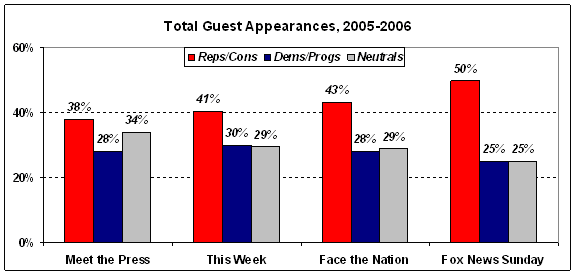
Figure 1.1
THE OFFICIAL SOURCES
The bulk of the newsmakers who appear on the Sunday shows are what one can call "official sources" -- representatives of the administration and elected officials. One might expect that these official sources would be balanced out over time -- administration representatives balanced by administration critics, and Republican members of Congress balanced by Democratic members of Congress. But this has not been the case.
In fact, this was one area in which Fox News Sunday did not look much different from the three other Sunday shows. While 66 percent of the elected and administration officials who appeared on the Fox program were Republicans, so were 62 percent of those on Meet the Press, 61 percent on Face the Nation, and 59 percent on This Week.
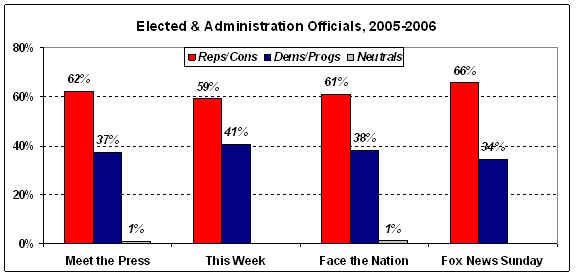
Figure 1.2
JOURNALIST GUESTS
When it comes to the journalists who appear on the shows to discuss the week's events, it would be reasonable to assume that conservative and progressive guest appearances would even out over time regardless of which political party is in power. But this has not been the case. While overall most journalist guests were centrist or nonpartisan -- either centrist columnists like David Broder or neutral reporters for major news organizations -- those that had an identifiable ideology were far more likely to be conservative.
In this area, the varying formats of the four shows come into play. Face the Nation does not conduct roundtable discussions with reporters, though it does often invite a journalist to participate in host Bob Schieffer's interviews with newsmakers. Meet the Press conducts roundtables, but not every week. While most of the reporters who participate are neutral, some are not -- and of those, during this two-year period, conservatives outnumbered progressives 35 to 25. The other two shows conduct weekly roundtables that consistently favor conservatives.
The roundtable on This Week features conservative columnist George F. Will on every episode. While the show sometimes brings on a progressive journalist or activist to counter Will, often it does not. With Will included, conservative journalists outnumber progressive journalists by a ratio of nearly 2-to-1.
Fox News Sunday's roundtable discussion is, like the show in general, a forum for conservative opinion. The regular lineup consists of two conservatives (Fox News' Washington managing editor Brit Hume and William Kristol, editor of The Weekly Standard), one progressive (National Public Radio's Juan Williams), and one neutral reporter (Mara Liasson of NPR). While other reporters such as Nina J. Easton of The Boston Globe or Ceci Connolly of The Washington Post sometimes substitute for Liasson, no progressive besides Williams appears on the show. Other conservatives who frequently appear include Roll Call executive editor Morton M. Kondracke; Paul Gigot, editor of The Wall Street Journal's editorial page; Fred Barnes, executive editor of The Weekly Standard; and Washington Post columnist Charles Krauthammer.
Interestingly enough, this makes Fox News Sunday the one program where one consistently finds a progressive voice. While Juan Williams has at times been guilty of passing on conservative misinformation -- and he is always outnumbered by conservatives -- his presence at least offers the opportunity for a progressive opinion to be offered at some point. This is something the other programs cannot say.
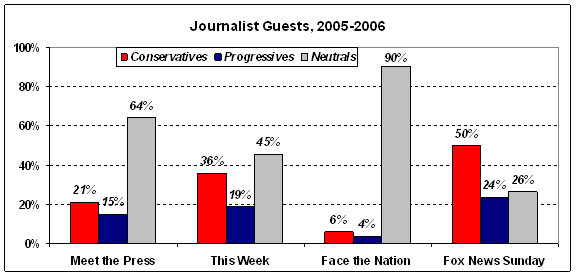
Figure 1.3
SAME OLD, SAME OLD
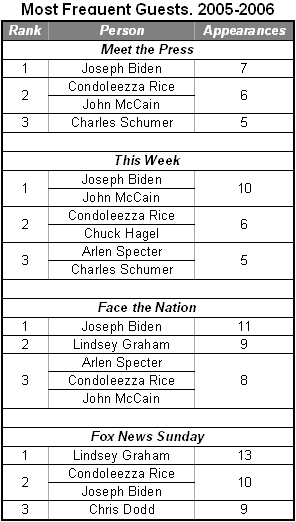
Viewers of the Sunday shows could be forgiven for thinking that the producers' instruction to their bookers each week goes something like, "Round up the usual suspects." While many newsmakers have appeared on the shows once or twice, the list is dominated by a few figures. Of particular note are Sens. Joseph R. Biden Jr. (D-DE) and John McCain (R-AZ), both of whom are running for president. Biden made 38 Sunday-show appearances in 2005 and 2006, while McCain followed closely with 30.
As for the contenders for the two parties' presidential nominations in 2008, some -- particularly McCain and Biden -- have received plenty of exposure on the Sunday shows,[1] while others have not been so fortunate:
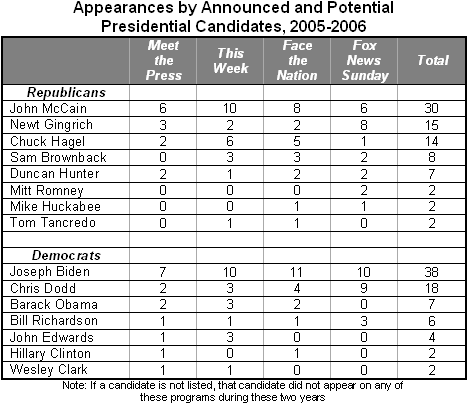
SOLO INTERVIEWS
Many of the Sunday-show interviews with newsmakers are done in pairs or in panels with multiple guests -- for instance, a Republican senator will often be paired with a Democratic senator to debate a particular issue. But the shows also grant solo interviews to guests they perceive as more important. When Sunday-show hosts interview a guest alone, the networks send a message that the guest holds such a unique place in the political landscape that a countervailing voice need not be presented.
In 2005 and 2006, all four programs gave a significantly larger proportion of solo interviews to Republican and conservative guests than to Democratic and progressive ones. Face the Nation was the worst offender among the three major network programs, giving more than twice as many solo interviews to conservatives as the program gave to progressives. Meet the Press was next, giving Republicans and conservatives an edge of 24 percentage points over Democrats and progressives. This Week also gave more solo interviews to Republicans and conservatives, but to a lesser extent than did the other two major network programs. Finally, Fox News Sunday easily outpaced the other three when it came to giving solo treatment to Republicans and conservatives, offering nearly three solo interviews to them for every solo interview it conducted with a Democrat or a progressive.
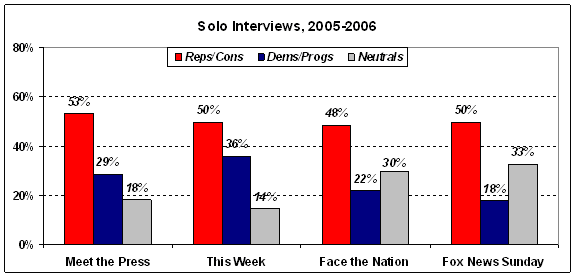
Figure 1.4
The top five recipients of solo interviews in 2005 and 2006 were:
- Condoleezza Rice (R, 30 solo interviews)
- John McCain (R, 29 solo interviews)
- Joseph Biden (D, 16 solo interviews)
- Howard Dean (D, 13 solo interviews)
- Michael Chertoff (R, 12 solo interview)
Stephen Hadley (R, 12 solo interviews)
McCain's finish near the top of both the overall list and the solo-interview list should be no surprise: He was the leading guest on the Sunday shows in our previous study as well -- McCain made 124 appearances on Meet the Press, This Week, and Face the Nation between 1997 and 2005. Furthermore, the Arizona senator's appearances are frequent and nearly always alone. During these 2005 and 2006, he was interviewed on the Sunday shows 30 times, 29 of which were solo. This sends the message to the viewing public that McCain is so important that he need not be paired with a Democratic colleague who might challenge or disagree with him.
IDEOLOGICAL TILT OF PANELS
Our final category examined the ideological tilt of panel discussions. A balanced panel is one comprised of an equal number of progressive and conservative guests, or of only centrist or nonpartisan guests. Imbalanced panels feature more guests from one side than the other.
All three major network shows had balanced panels a majority of the time in both 2005 and 2006. However, all three also had right-leaning panels more often than left-leaning ones.
As was discussed above, all the journalist roundtables on Fox News Sunday are tilted to the right, which accounts for most of the striking results for that show. But the other panels on the show were also skewed: Among Fox News Sunday panels other than the journalist roundtable featuring Hume, Barnes, et al, only three panels tilted left over this two-year period, while 14 tilted right.
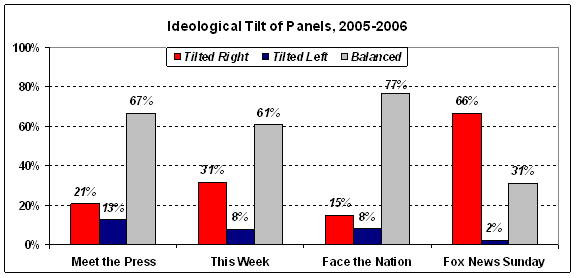
Figure 1.5
In practice, this means that one sees instances again and again in which panels feature conservative voices, centrist or neutral voices, and no progressive voices. In others, the progressive voices are simply outnumbered. To take just one example, a panel on the February 19, 2006, edition of Meet the Press featured NBC chief White House correspondent David Gregory, along with New York Times columnist Maureen Dowd, who, while a harsh critic of President Bush, pulled no punches with Bill Clinton. These two were accompanied by strongly conservative Wall Street Journal editorial page editor Paul Gigot and Republican strategist Mary Matalin, who can be counted on to offer unrelenting spin on the Bush administration's behalf. (The next week's Meet the Press featured a lineup consisting of Republican Sen. John Warner (VA), Republican Rep. Peter King (NY), and Republican California Gov. Arnold Schwarzenegger.)
We would not argue that journalist panels should consist only of centrists and neutral reporters, nor would we say that every last panel should be precisely balanced between the right and the left. Both neutral reporters and journalists whose opinions are more at the forefront of their writing have valuable contributions to make to these discussions. And there are any number of reasons a given program's discussion might not represent all sides equally. But one can reasonably expect that over time, the number of progressives and conservatives who are given this high-profile forum for their views should be roughly equal. As these data show, however, there has not been parity on the Sunday shows. Instead, conservatives once again have enjoyed a clear advantage.
SINCE THE MIDTERM ELECTION
The 2006 midterm election fundamentally altered the political landscape in Washington, as Democrats took both houses of Congress. So did the Sunday shows alter their guest lists in response? The answer is that the overall ideological contours of Sunday-morning television did not change: Republicans and conservatives still hold the advantage. But some of the shows did better than others.
ABC's This Week continued the trend it showed in 2006, achieving parity between the right and the left in its guest list. This program is the only one on which one is as likely to find Democratic and progressive guests as Republican and conservative guests. But the picture on the other three programs is less encouraging. Meet the Press has been just as imbalanced in recent months as it was before, as has Face the Nation. Fox News Sunday made some improvement; the advantage for Republicans and conservatives declined from 25 percentage points to 15 percentage points, but it remains the most imbalanced show overall.
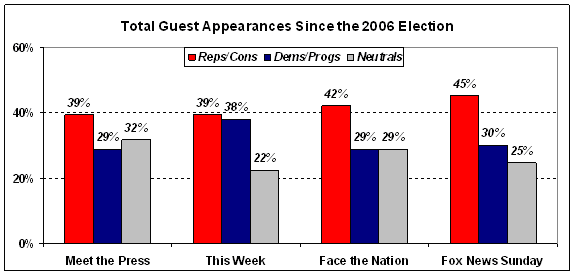
Figure 2.1
These totals account for everyone who appears on the shows, both newsmakers and commentators. But what about the "official" sources -- the administration and elected officials whose interviews make up the bulk of the shows' content?
On this score, two shows have improved their performance since the election, while two have not. Once again, This Week shows a nearly equal split between Democrats and Republicans, with Democrats actually making up slightly more than half the guests (52 percent). The other show that improved is Fox News Sunday. Though its overall guest list is still dramatically skewed due to the preponderance of conservatives on its discussion panels, it performed quite well on this measure.
One cannot say the same for Meet the Press and Face the Nation, however. Just as they did before the election, they continue to feature interviews with more Republican elected and administration officials.
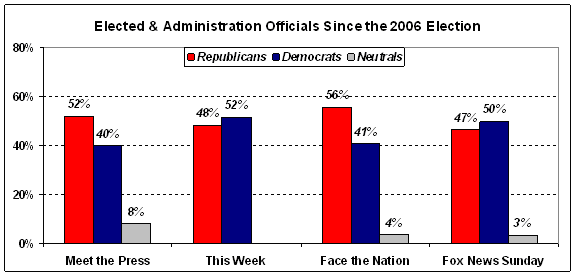
Figure 2.2
One other finding is worth mentioning. Despite the Democratic takeover of Congress, all four programs continue to grant more solo interviews to Republicans and conservatives than to Democrats and progressives. Some of the Republicans are representatives of the Bush administration, but others are members of Congress. It would appear that the election did not alter the shows' willingness to single out those on the right as the "important" newsmakers who deserve the privilege of a solo interview.
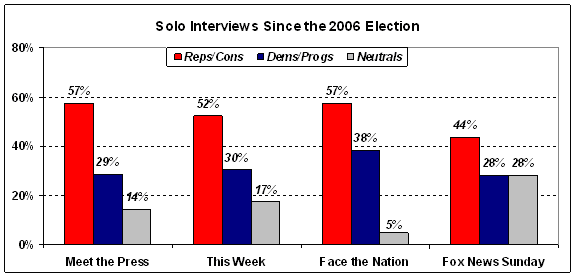
Figure 2.3
DIFFERENCES OVER TIME
|
TOTAL APPEARANCES On the Sunday shows, 2006 was in some ways a more imbalanced year than 2005. Perhaps most notably, the gap between Republicans/ conservatives and Democrats/progressives grew larger on Meet the Press, Face the Nation, and Fox News Sunday. This is particularly odd in the year of a congressional election, when one would expect that the shows would try particularly hard to achieve a balance of guests. (The data on elected and administration officials showed only tiny differences between the two years, so those charts are omitted). There are also variations over time. When one combines the four shows, there was only one month during this 24-month period -- November 2006 -- when Democrats and progressives outnumbered Republicans and conservatives overall, presumably because of the Democratic victory in the midterm elections. Furthermore, that lead was tiny: During November 2006, the total number of Democrats and progressives exceeded the number of Republicans and conservatives by exactly one. The shows' individual performances were slightly less abysmal: Democrats and progressives held the advantage on Meet the Press for five months out of the 24 considered, for three months on This Week, and for five months on Face the Nation. Again, the exception was Fox News Sunday, which hosted more Republicans and conservatives during every month of the study. |
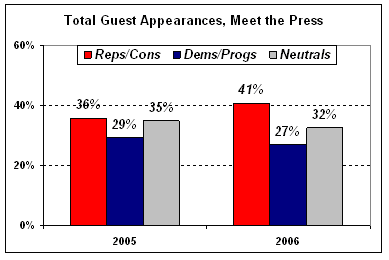 Figure 3.1 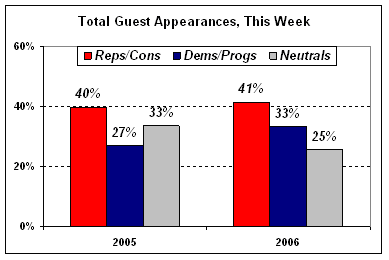 Figure 3.2 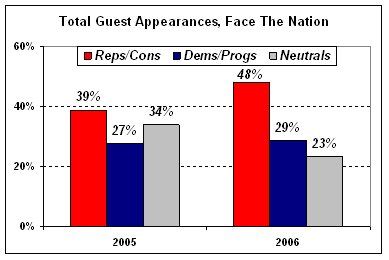 Figure 3.3 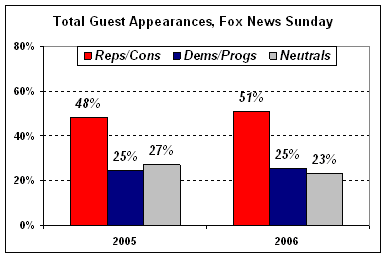 Figure 3.4 |

Figure 3.5
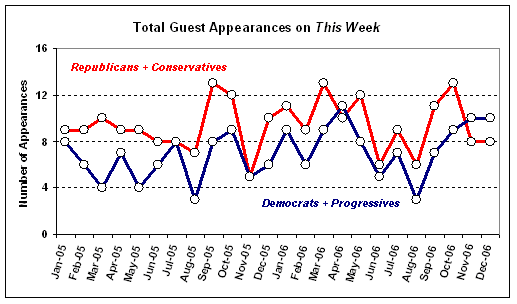
Figure 3.6
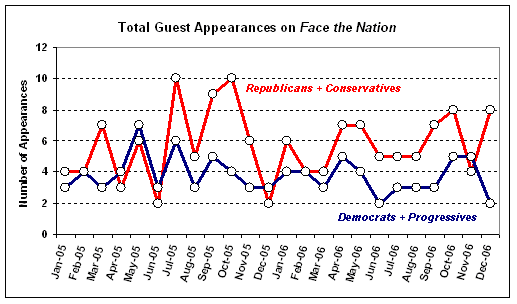
Figure 3.7
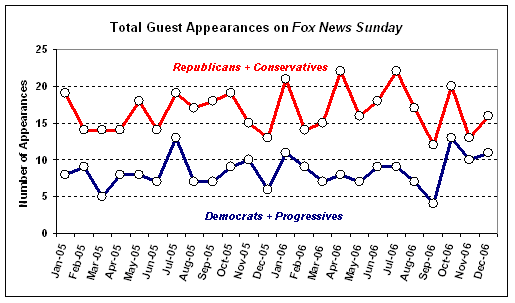
Figure 3.8
|
JOURNALIST GUESTS On the topic of journalist guests, there were actually some tiny improvements on two of the shows between the two years. The percentage of progressive journalists on This Week rose from 16 percent in 2005 to 21 percent in 2006 -- an improvement, but still far below the 36 percent of conservative guests the show hosted in both years. Fox News Sunday, easily the most skewed of the shows on this score, raised the percentage of progressive journalists from 23 percent to 24 percent (although conservatives went from 49 percent to 50 percent). Meet the Press, however, hosted fewer progressive journalists in 2006 than it did in 2005: The figure went from 17 percent to 13 percent. Conservative journalists, on the other hand, stayed at 21 percent of those appearing on the NBC program. |
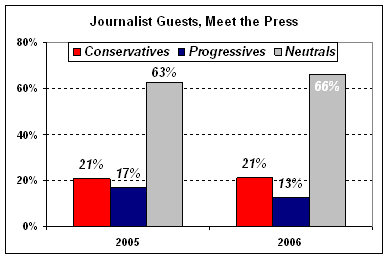 Figure 3.9 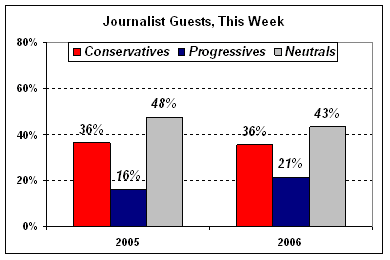 Figure 3.10 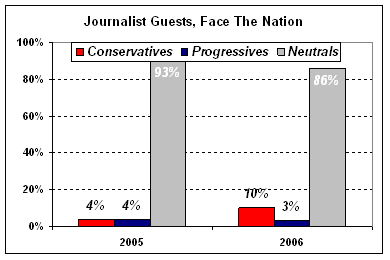 Figure 3.11 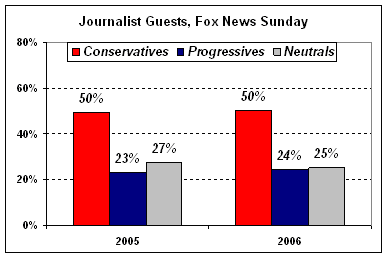 Figure 3.12 |
|
SOLO INTERVIEWS Both Face the Nation and Fox News Sunday did more solo interviews with Republicans and conservatives in 2006 than they had in 2005. Face the Nation held three more solo interviews with Democrats and progressives in 2006 than it did in 2005, but nine more with Republicans and conservatives. Fox News Sunday held six more solo interviews with Democrats and progressives in 2006 than it had in 2005, but 16 more with Republicans and conservatives. The differences on the other shows were much less substantial. |
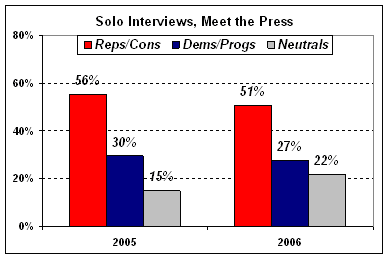 Figure 3.13 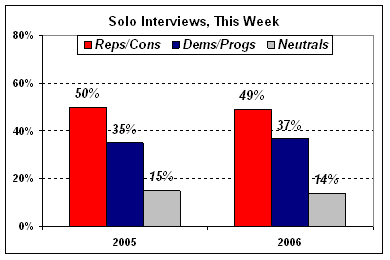 Figure 3.14 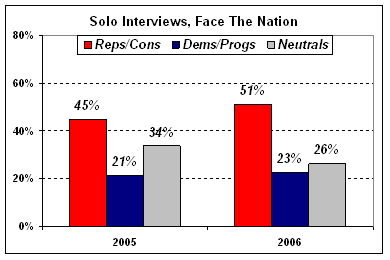 Figure 3.15 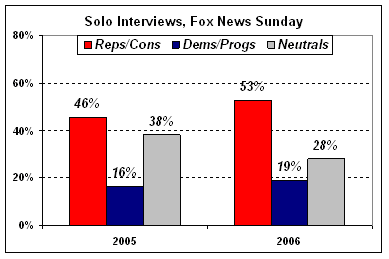 Figure 3.16 |
|
TILTED PANELS The tilt of panels is another area in which the situation worsened in 2006. Face the Nation performed the best overall, with the vast majority of panels being balanced. On the other end of the spectrum was Fox News Sunday, where most panels were imbalanced in both 2005 and 2006, to virtually equal degrees. Though it was the most balanced overall, Face the Nation showed the largest change between 2005 and 2006, going from giving the right a 2-point edge in 2005 to giving it a 13-point edge in 2006. This Week tilted right three times as often in 2006 as it tilted left -- which actually was an improvement over its performance in 2005. Meet the Press also performed worse in 2006, giving right-leaning panels a 12-point advantage over left-leaning ones, expanding what had been a 5-point gap in 2005. |
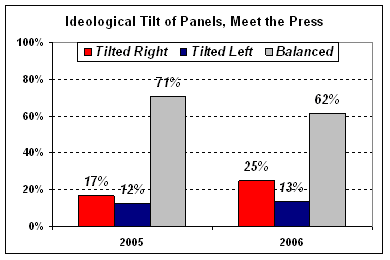 Figure 3.17 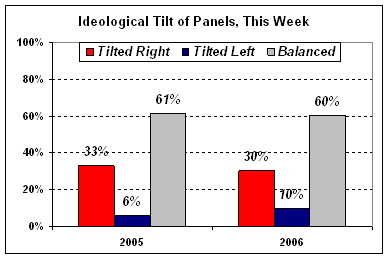 Figure 3.18 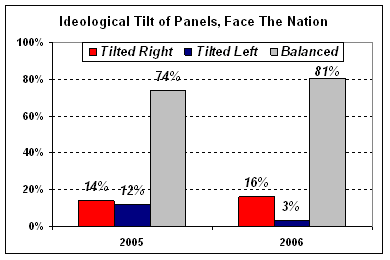 Figure 3.19 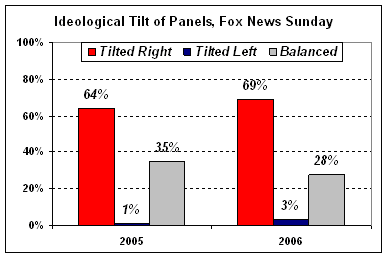 Figure 3.20 |
COMBINED RESULTS
This section draws on results from the study issued a year ago, "If It's Sunday, It's Conservative," which examined these programs dating back to the beginning of Bill Clinton's second term. Because the prior study did not include Fox News Sunday and the current study does, we present below summaries of the past two years that include the Fox program, and comparisons with previous years that do not.
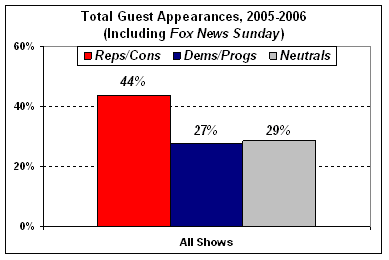
TOTAL GUESTS SUMMARY
When data from the four programs are combined, we see that over the previous two years, the Sunday-morning talk shows gave Republicans and conservatives a substantial advantage over Democrats and progressives. Republicans and conservatives made 44 percent of all guest appearances on the shows, compared with 27 percent by Democrats and progressives.
Figure 4.1
These numbers follow closely the results from the first four years of the Bush administration. From 2001 to 2004, 40 percent of the guests on the three major network programs were Republicans and conservatives, compared with 29 percent for Democrats and progressives. During Bill Clinton's second term, the balance was more equal, but with the edge still going to Republicans and conservatives.
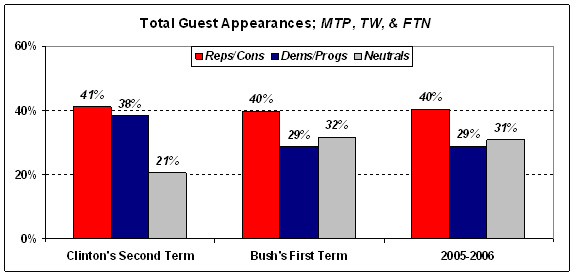
Figure 4.2
The margin by which Republican/conservative appearances exceeded Democratic/progressive appearances was obviously not precisely the same from week to week. But looking over time, we see that the right had the advantage in 23 of the 24 months during this period. Only in November 2006 -- in the wake of the Democratic victories in the midterm elections -- did Democrats and progressives narrowly outnumber their Republican and conservative counterparts. But the next month, the pattern reverted to form.
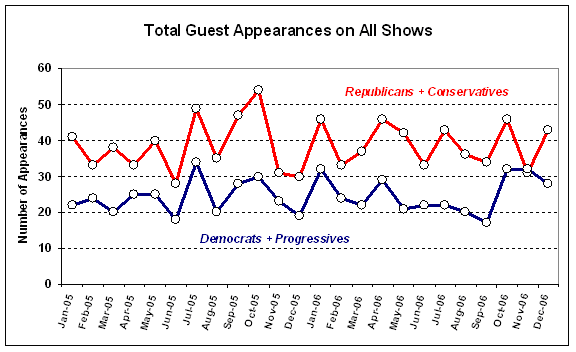
Figure 4.3
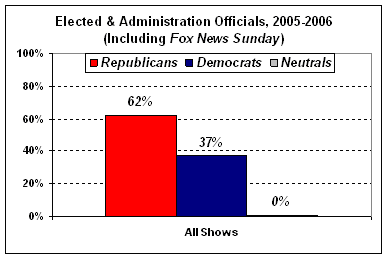
ELECTED & ADMINISTRATION OFFICIALS
Examining only "official" government sources -- elected officials and administration officials -- the 2005-2006 data show a marked advantage for Republicans:
Figure 4.4
During Bush's first term, the Republican edge on the three major network shows was exactly the same as it was during 2005-2006, 61 percent to 39 percent. Under Clinton, elected Democrats and administration officials did hold an edge over their Republican counterparts. However, the disparity was not nearly as lopsided as it has been during the Bush years. From 1997 to 2000, Democrats outpaced Republicans 53 percent to 45 percent:
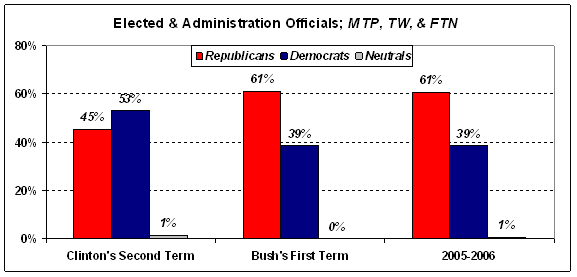
Figure 4.5
From 1997 to 2000, Democrats had an 8-point lead on Republicans. During Bush's first term, however, Republicans nearly tripled that with a 22-point advantage. The huge reversal was accounted for not as much by an increase in Republican appearances but by a drastic decrease in Democratic ones.
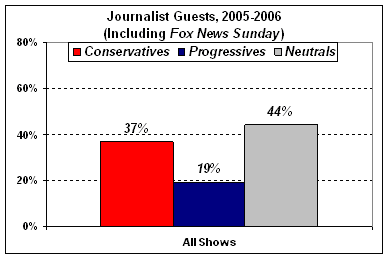
JOURNALISTS
While journalist guest appearances have generally trended toward more centrist and nonpartisan reporters than ideological ones, conservatives have nonetheless outnumbered progressives nearly 2-to-1. Conservatives outnumbered progressives in 2005 and 2006, 37 percent to 19 percent. Even excluding Fox News Sunday, the figures are 26 percent to 15 percent:
Figure 4.6
There has been a change on this score in recent years: Since George W. Bush took office, the networks have booked more neutral and centrist journalists. But when ideologically identifiable commentators have been booked, the right has consistently gotten the edge. As the figures show, conservative journalists have long dominated progressive ones on the Sunday shows:
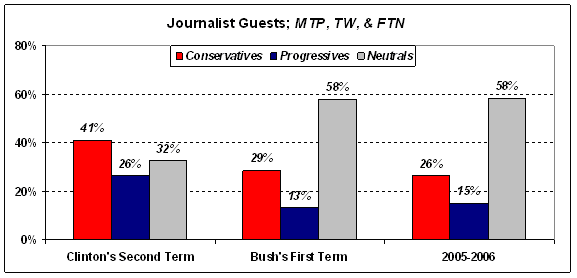
Figure 4.7
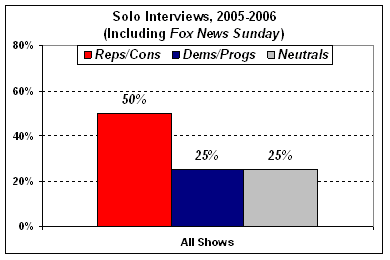
SOLO INTERVIEWS
In 2005 and 2006, the networks continued their long-standing practice of giving Republicans and conservatives an edge over Democrats and progressives by bestowing on them half of all solo interviews:
Figure 4.8
As in the other categories, the results for the period encompassing the 109th Congress do not deviate much from the findings covering Bush's first term. But during Clinton's second term, Democrats held only a slight edge over Republicans, while Republicans opened up a wide advantage in the category during Bush's first term:
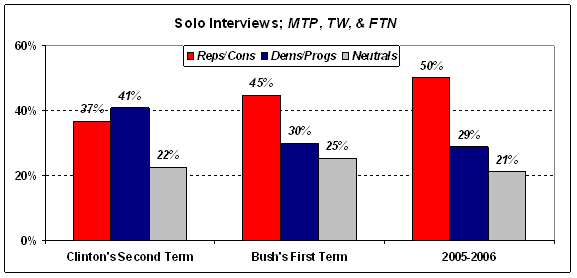
Figure 4.9
One might imagine that, for the most part, administration officials are interviewed alone while elected officials are interviewed in pairs or as part of a balanced panel. But if that were the case, the advantage in solo interviews for the party in charge of the White House would always be around the same size -- and it isn't. In fact, during Clinton's second term, there were only slightly more solo interviews given to Democrats than Republicans (a 4-point gap). But in Bush's first term, the Republican advantage is 15 points, nearly four times as large. And during 2005 and 2006, that gap grew to 21 points.
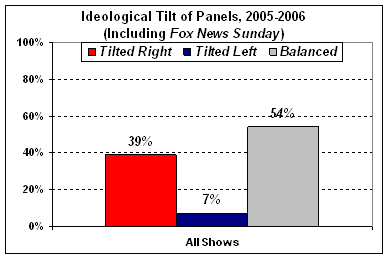
IDEOLOGICAL TILT OF PANELS
The data demonstrate that while the majority of the panels on the shows are balanced, those that were imbalanced leaned to the right far more often than to the left:
Although a substantial portion of this disparity comes from Fox News Sunday, even with that program excluded the results are still stark. Over the past two years, 24 percent of the panels on the other three shows tilted to the right, while only 10 percent tilted to the left.
Figure 4.10
The 2005-2006 figures closely mirror the results of the previous four years. During the first Bush term, guest panels tilted right 27 percent of the time, compared with 9 percent for left-leaning panels. During the second Clinton term, right-leaning panels still held an edge over left-leaning ones, though the disparity was smaller:
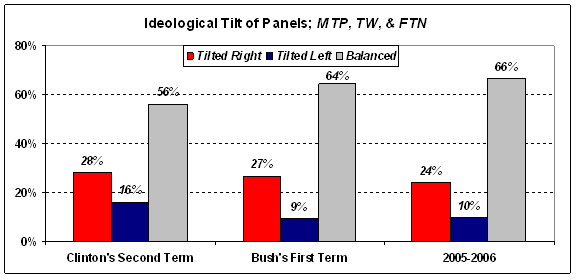
Figure 4.11
CONCLUSION
The overall conclusion of this study is clear: All four Sunday-morning talk shows gave Republicans and conservatives significantly more airtime than Democrats and progressives during 2005 and 2006.
While there are variations among Meet the Press, This Week, Face the Nation, and Fox News Sunday, all showed evidence of imbalance toward the right. All four programs featured more Republicans and conservatives than Democrats and progressives. All four hosted more conservative journalists than progressive journalists. All four gave more solo interviews to Republicans than to Democrats. All four were more likely to feature a panel tilted to the right than tilted to the left.
We must note that we make no claims of intentional bias in the systematic over-representation of conservatives that we have documented. It is not our assertion that the producers of the Sunday-morning talk shows have set out to intentionally skew their programs in favor of right-leaning voices. Whatever the combination of reasons that produced the imbalance, the imbalance nonetheless exists. It is our hope that our study will lead these shows to scrutinize their practices.
When we released our prior study on this topic a year ago, the response from some network representatives was that their guests merely reflected the realities of power: When Republicans were in charge, Republicans were asked to appear more often, and when Democrats were in charge, Democrats were asked to appear more often. If they offered this argument in good faith, the coming of the new Democratic Congress would see a swing toward Democrats and progressives on their shows.
So far, such a swing has only occurred on ABC's This Week, and to a lesser extent on Fox News Sunday. Furthermore, no network representative has ever given an answer to the question of why conservative journalists outnumber progressive journalists so dramatically on the Sunday shows. This question has nothing to do with which party is in power, and the disparity has been obvious for all of the past decade.
In the wake of the November 2006 elections, it will be interesting to see how the networks respond to the new Democratic majority in particular and the shifting political climate in general. Will progressive voices continue to be marginalized? Will the "reasonable" center continue to be defined by an overrepresentation of conservatives and a paucity of progressives? As ABC, CBS, NBC, and Fox make decisions about their coverage of political affairs in the coming days, they should consider how they could better serve their viewers and the public.
METHODOLOGY
This study followed the same methodology as the previous study, "If It's Sunday, It's Conservative." What follows is an updated version of the Methodology note from the initial study:
Our goal in designing the methodology for this study was to ensure that the classifications would be as unambiguous and defensible as possible, even to those who profoundly disagree with the goals of our organization.
Readers should be clear on what we did not do: These classifications do not represent an analysis of what guests actually said when they appeared on a show on a given date. Coding each guest's comments for their ideological slant would have introduced enormous difficulties and opportunities for subjectivity. Instead, we simply classified guests based on their general partisan or ideological orientation.
In the vast majority of cases, guests are clearly identifiable by their party or ideology (or as having none). Of course, in a few instances, these decisions were not as simple to make. We therefore constructed rules that could be applied as strictly as possible.
We are well aware that our results are likely to be attacked by those displeased with what the facts demonstrate, and some may try to undercut the credibility of our findings by charging that we have stacked the deck by classifying too many guests as conservative. Partly for that reason, where a guest's identification was in question, Media Matters chose to err on the side of listing that guest to the left. For example, while actor Michael J. Fox has campaigned for both Democrats and Republicans who support increased federal funding for embryonic stem cell research, he was labeled "progressive" because support for that issue is primarily identified with Democrats and progressives.
Following are some of the principal rules coders employed in classifying guests:
- The party designations (Democratic and Republican) are reserved for current and former officeholders, candidates, campaign staff, political consultants associated with one party or the other, and administration officials. All others are labeled conservative, progressive, or neutral.
- The neutral category does not necessarily imply strict ideological neutrality but, rather, might better be understood as neutral/centrist/nonpartisan -- we use the term "neutral" for the sake of brevity.
- When guests served in both Republican and Democratic administrations in the past, they were coded as neutral barring any compelling reason to do otherwise. In a few cases, however, a former official who had served under presidents from both parties became clearly identified with one ideology, and were coded accordingly.
- Our "Journalist" classification applies not only to daily reporters but also to opinion columnists, magazine writers, etc.
- In the case of foreign officials and journalists, we labeled all as neutral -- even though the political ideology of some might be identifiable -- to avoid the need to analyze the politics of other countries.
- Members of the armed forces were classified with the administration in power if they were on active duty at that moment. However, it became apparent that, particularly during the Iraq war, retired officers have often appeared to offer military analysis. Since the nature of that analysis is almost always nonpartisan, all retired officers were coded as neutral absent any other affiliation.
ACKNOWLEDGEMENTS
This study was performed, and this report written, by Senior Fellow Paul Waldman, Research Fellow Elbert Ventura, and Research Analyst Robert Savillo, all of Media Matters for America.
[1] We should acknowledge here that these results are a product of decisions made by both the shows' producers and the politicians themselves. Presumably, if Sen. Hillary Rodham Clinton (D-NY) wanted to appear on the shows more often, she could, while someone like Rep. Tom Tancredo (R-CO) would be happy to receive more frequent invitations.
